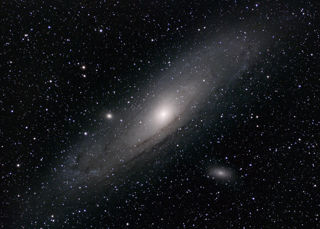
Apollo 13 Signed Lunar Orbit Chart
Apollo 13 Signed Lunar Orbit Chart
This map of the Moon’s surface charts the projected orbits that the Apollo 13 spacecraft was due to make – including the landing site at Fra Mauro. The chart has been signed by Apollo 13 Commander, Jim Lovell and Lunar Module Pilot, Fred Haise. Haise has also written the joking remark, “No LM [Lunar Module] touchdown, but no LM impact either!!” – to highlight the fact that Apollo 13 managed to swing around the Moon and return safely to Earth, instead of crashing into the surface. After a spacecraft malfunction on the journey to the Moon, Apollo 13 aborted plans to land – and instead it became a race against time to find a new flight plan that could safely return the crew to Earth.The Lunar Orbit Chart, shows the orbital ground tracks for revolutions 1,19,40,and 46 around the Moon and was made by the Aeronautical Chart and Information Center, using data from the LEC-1 and LFC-1 charts. LEC-1 (Lunar Earthside Chart) and LFC-1 (Lunar Farside Chart) used data from the Lunar Orbiter Satellites I, II, III, IV, and V - five unmanned Moon orbiting satellites launched by the USA between 1966-1967 that mapped the Moon to help pick landing sites for the Apollo missions.
Just like the Earth, the Moon is tilted on its axis. As the Moon is tilted at an angle of around 6.68 degrees (compared to Earth's 23.44 degrees), each time an Apollo spacecraft orbited around it, it would pass over a slightly different part of the Moon below – because the Moon is also turning. This predicted orbit is tracked on this chart, which is why you get the sweeping lines that change depending on which orbit you are looking at, and where the Apollo Command Module would be.
The orbits are colour coded so that orbits 1 and 19 are red (up until LOPC-1), with 19 (after LOPC-1) to 40 (up until LOPC-2) shown in Blue. 40 (from LOPC-2) and 46 are in black. LOPC stands for Lunar Orbit Plane Change, a series of manoeuvres necessary to allow the Command Module and Lunar Module to rendezvous again after leaving the Moon’s surface. Whilst the Lunar Module was on the ground the Command Module's orbit would take it away from the landing site after a few orbits. After the undocking and landing, the Command Module fired the Service Prolusion System, to change the plane of its orbit whilst the Lunar Module carried out its mission. When it was time to leave the Moon’s surface, the Command Module carried out another engine burn to bring it back into the right orbital plane so that it was possible for the Lunar Module to meet back up with it.
All images:
-
![Apollo 13 Lunar Orbit Chart]()
Apollo 13 Lunar Orbit Chart -
![Apollo 13 Lunar Orbit Chart]()
Apollo 13 Lunar Orbit Chart -
![Apollo 13 crew photograph. Left to Right, Jim Lovell, Jack Swigert, and Fred Haise - Credit: NASA]()
Apollo 13 crew photograph. Left to Right, Jim Lovell, Jack Swigert, and Fred Haise - Credit: NASA -
![Apollo 13 Lunar Orbit Chart]()
Apollo 13 Lunar Orbit Chart -
!["No LM touchdown, but no LM impact either!! Freddo"]()
"No LM touchdown, but no LM impact either!! Freddo" -
![Fred Haise Apollo 13 LMP (Lunar Module Pilot)]()
Fred Haise Apollo 13 LMP (Lunar Module Pilot) -
![Apollo 13 Lunar Orbit Chart]()
Apollo 13 Lunar Orbit Chart -
![Apollo 13 Lunar Orbit Chart]()
Apollo 13 Lunar Orbit Chart -
![Apollo 13 Lunar Orbit Chart]()
Apollo 13 Lunar Orbit Chart -
![Apollo 13 Lunar Orbit Chart]()
Apollo 13 Lunar Orbit Chart -
![Apollo 13 Lunar Orbit Chart]()
Apollo 13 Lunar Orbit Chart
Audio
Apollo 13 'Houston we've had a problem' audio - Credit: NASA
Web resources
More information
Object number
2016-10
Location
Artefact Store
Curator's comments
Click play on the Audio to hear the famous "Houston we've had a problem" message sent by the crew - Credit: NASA
Has this object been into space?
No
Dimension - Dimension, Value, Measurement unit
Height: 30.1cm
Width: 103.5cm
Material
Paper
Materials & techniques note
Lithographic print
Inscription Content - Content
No LM touchdown, but no LM impact either!!
Freddo
Fred Haise
Apollo 13 LMP
James Lovell
Apollo 13 CDR
Associated Organisation
National Aeronautics and Space Administration
U.S. Air Force Aeronautical Chart and Information Center
Associated event
Apollo 13
Associated Person
Fred Haise
Jim Lovell
Object Production Date
5/03/1970
Object Production Organisation
National Aeronautics and Space Administration
U.S. Air Force Aeronautical Chart and Information Center
On Display Status
On display
Copyright and Photos
Photography is shared via the license below.
However, some objects on this website are on loan to the National Space Centre and are being shared through the permission of their owners.
Commercial use of images from this website is not allowed without additional permissions being granted. To request permission to use images for purposes not covered in the license below, please contact [email protected]
Individual objects on loan to the National Space Centre may have additional copyright permissions, so advice should always be sought before use.
![]()
This work is licensed under a Creative Commons Attribution-NonCommercial 4.0 International License.












